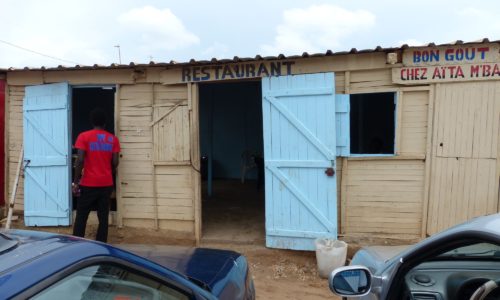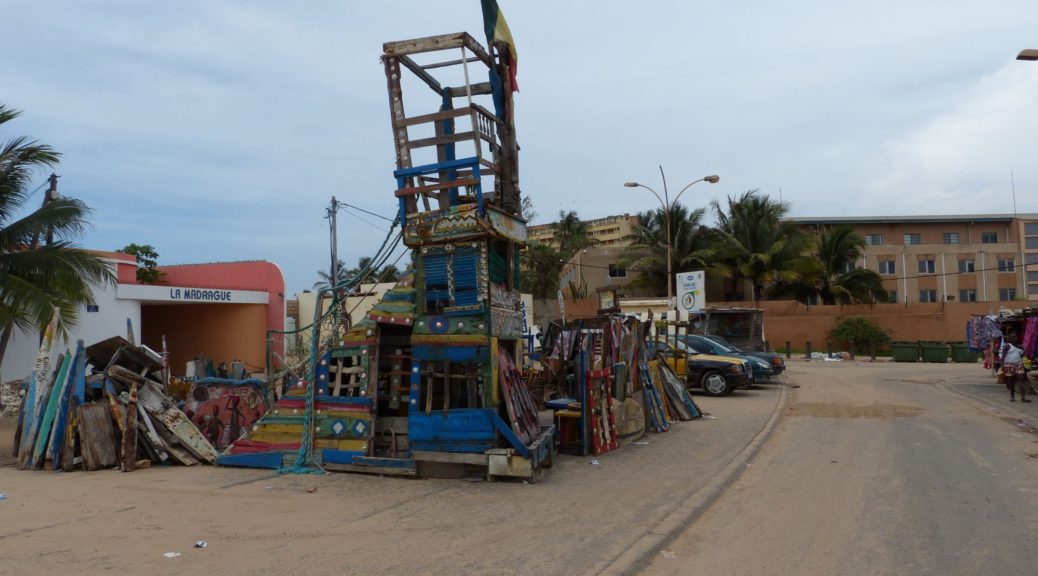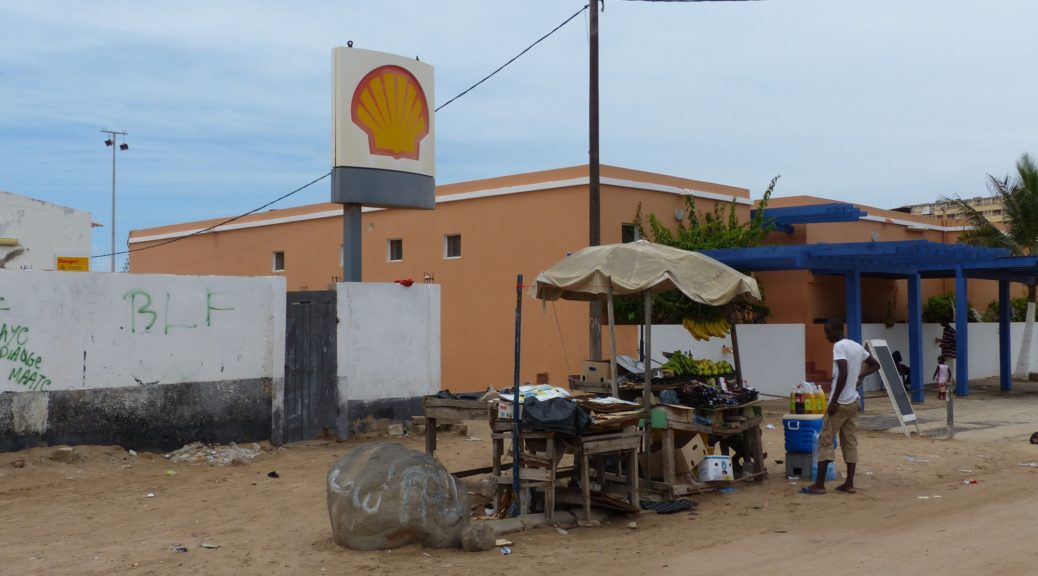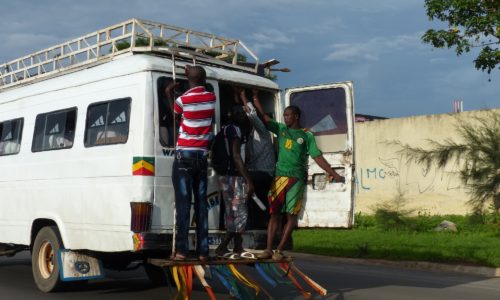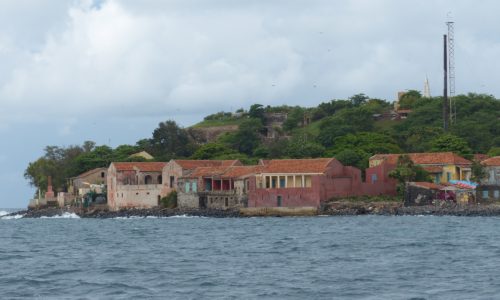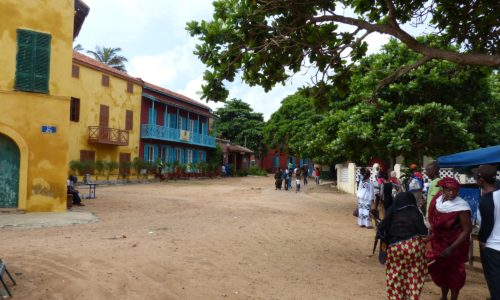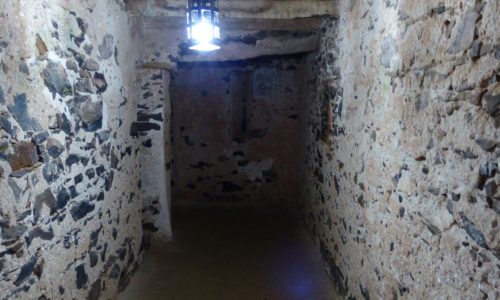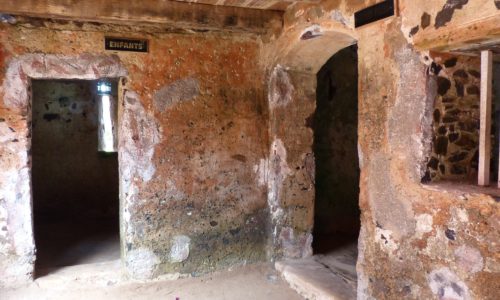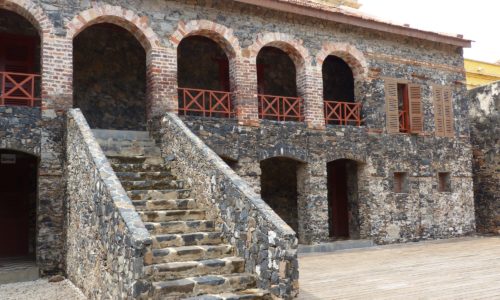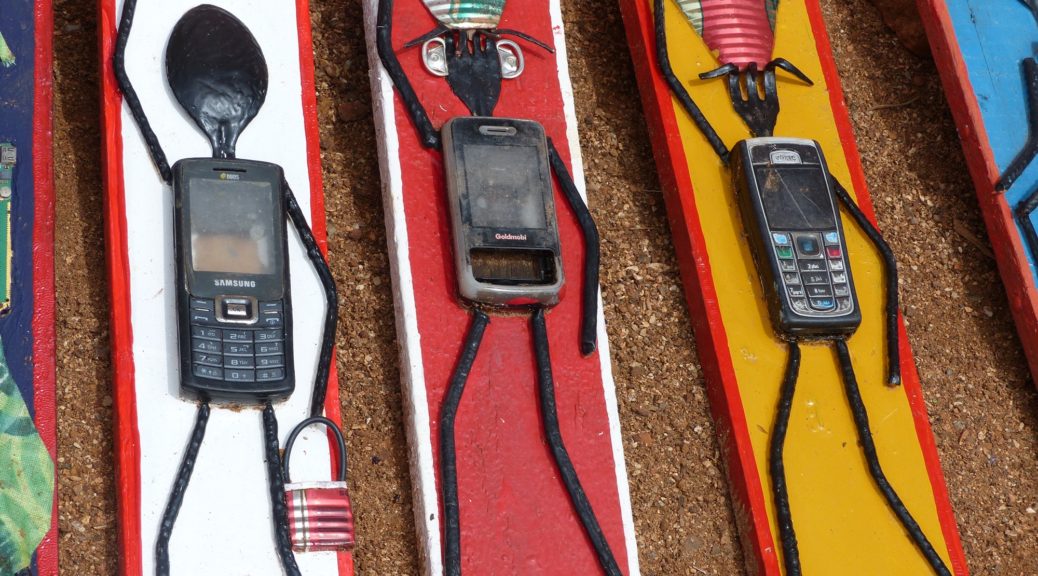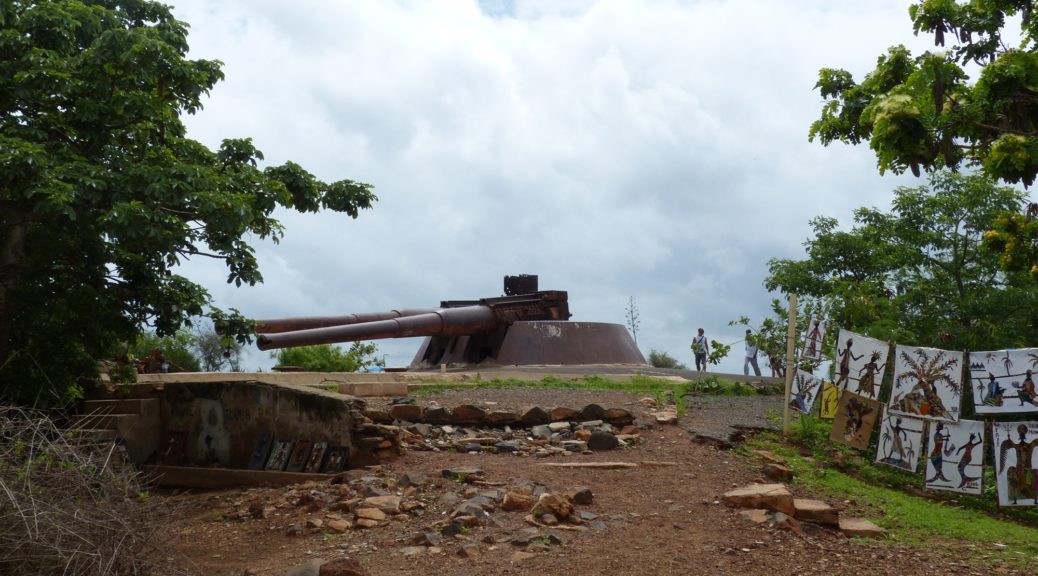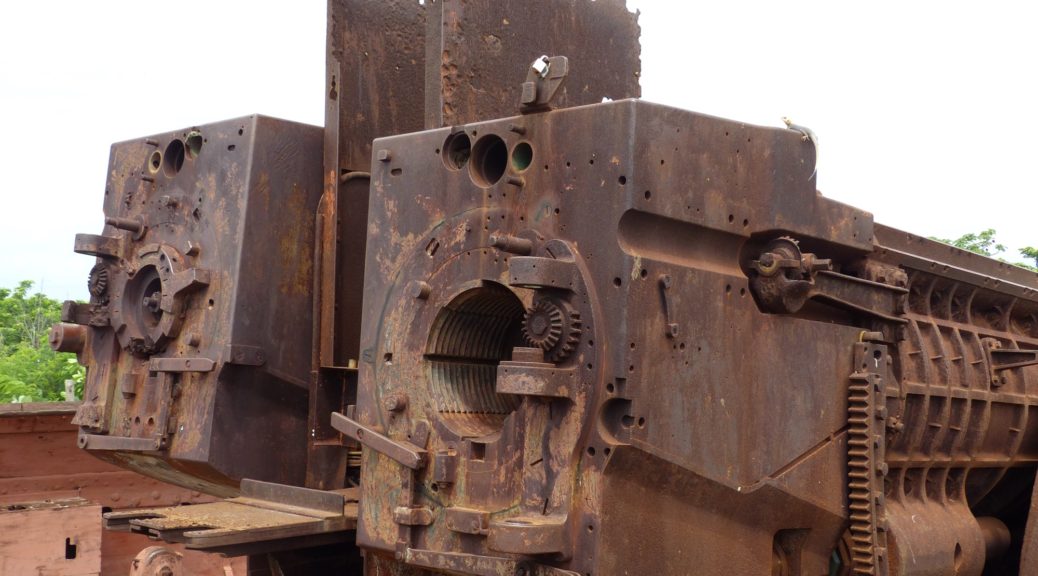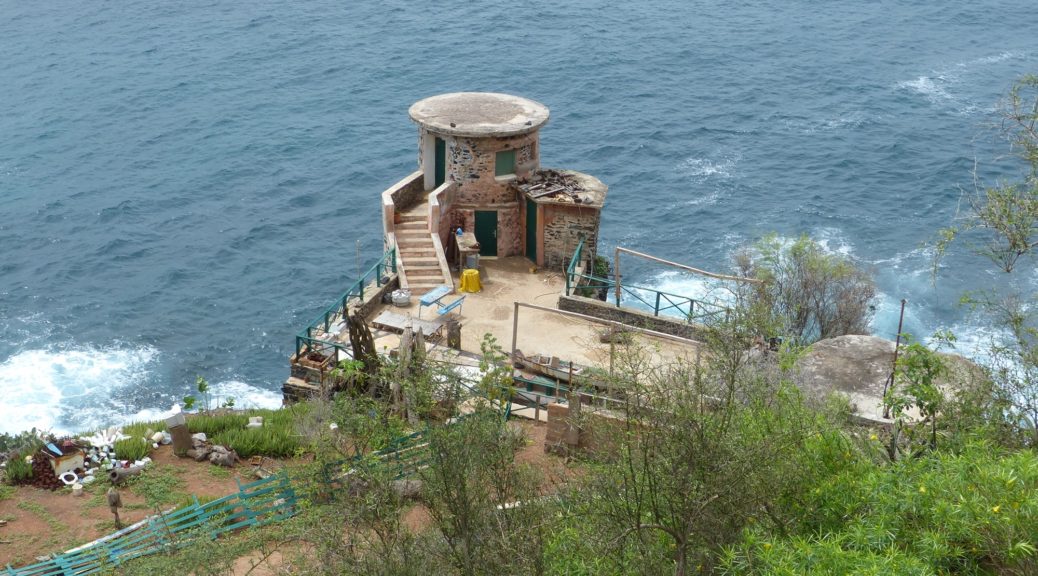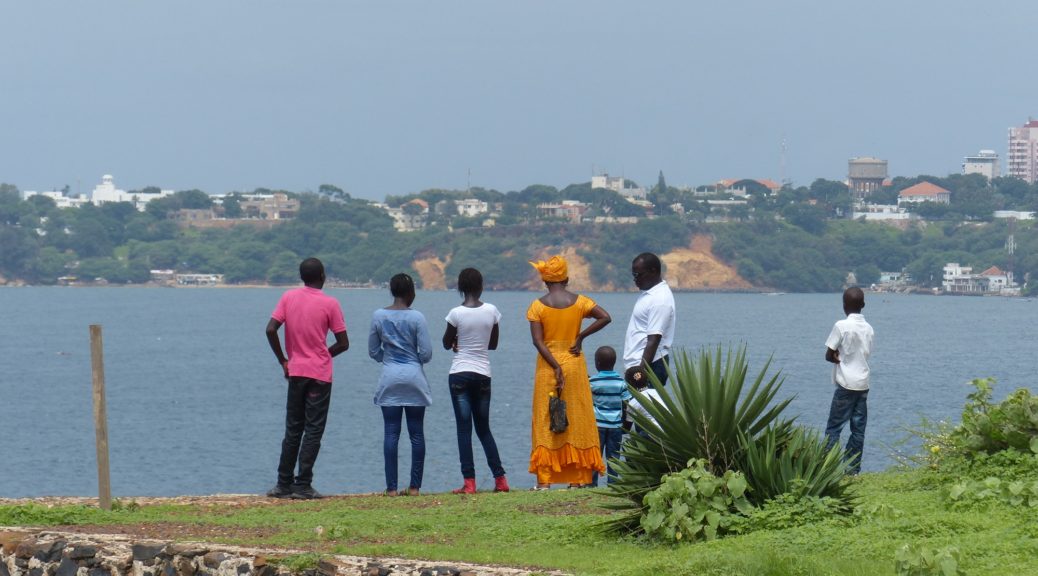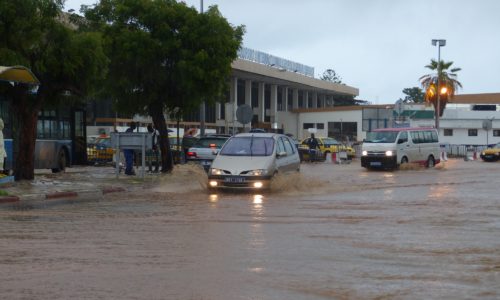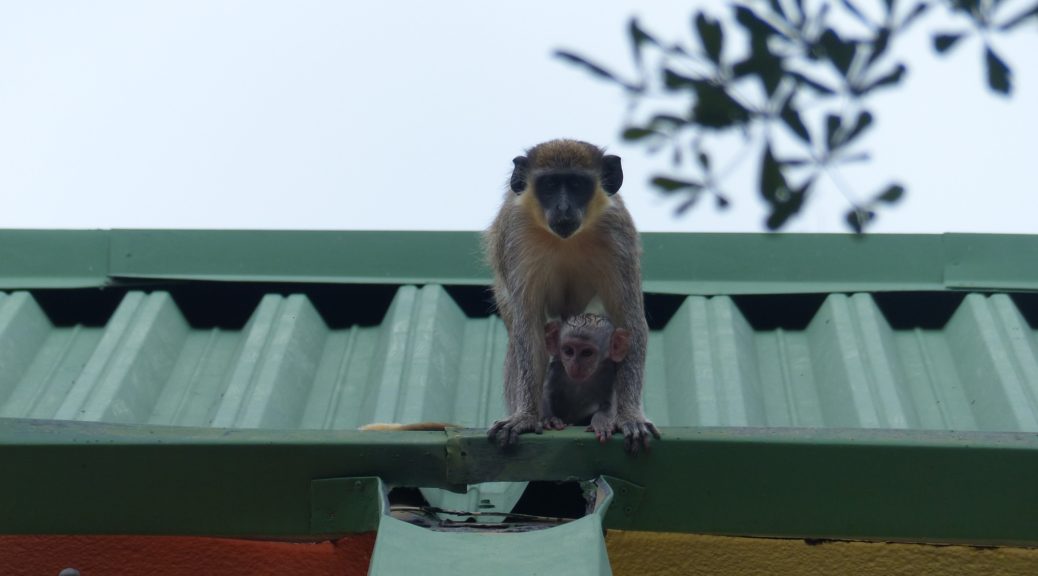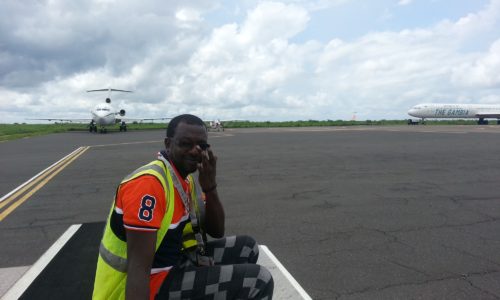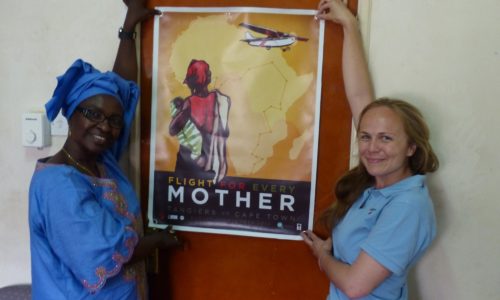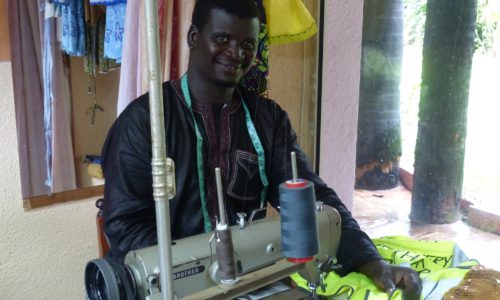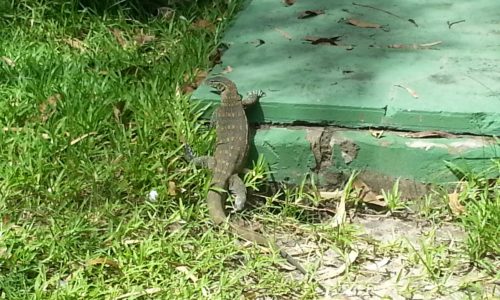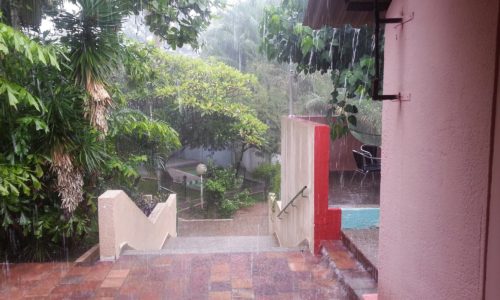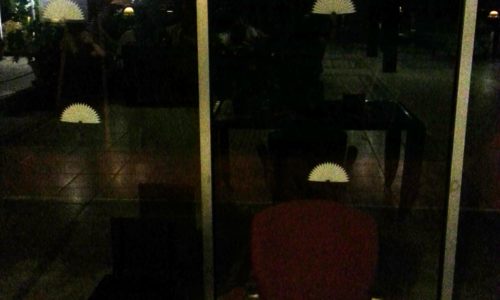Africa – Senegal and Gambia
The Onomo hotel turned out to be a very different experience to the Sahara Regency in Dakhla where one would have been unsurprised to find bullet holes in the hallway and the bedroom chair was a folding camping one. This new hotel was modern, air conditioned, and clean and a very comfortable place to spend a few nights. After an excellent breakfast we met up with the driver that Sophia, through befriending one of the waiters, had organised for the day, and sped off through the morning traffic to our first stop; the Guinean Embassy. One downside of employing an amateur driver soon became clear, as we spent 30 minutes stopping and asking for directions before finally pulling up at the embassy for Guinea Bissau. Close, but not quite. The entire charade repeated itself and this time we arrived at the place we wanted to be. Smaller embassies, away from the big cities such as London, are rather easier to navigate. It took just 15 minutes before we were on our way again with a promise that the visas would be ready the following day.
Our next stop was the offices of AMREF, one of the charities that Sophia was hoping to direct donations to from people who followed the trip and wanted to contribute. This time the driver spoke to the secretaty in advance by phone, and we managed to make it straight there without stopping for directions. We were received by the projects director who spent an hour explaining about how they work in this new office in Senegal; it opened two years ago and was the first in Western Africa. A lot of their energy was spent on simple, sustainable programs such as education of school children about proper hygiene, and providing the facilities needed for the same.
On the way back to the hotel, Sophia asked the driver to take us for a traditional Senegalese meal. She did not quite bargain on how seriously he would take this task, and we ended up in a small wooden shack near a beach, with a few tables inside, a sand floor, and plenty of locals around. The meal was served out of large vats lined up on a table on one side, which were evidently very popular with the local fly population. It looked, all in all, a lot like the “worst possible scenario” in terms of travel food advice! I managed to duck out of eating (the heat really robs me of my appetite, you know…) as although I did want to try local cuisine, I was not in a hurry for food poisoning. Sophia ate a large enough portion to be polite, reasoning that she could always dose up on prophylactic antibiotics back at the hotel.
With the meal finished, our driver took us for a quick walk down the beach to see his house. The beach was an interesting mix of beautiful expensive villas at one end, and real shanty town at the other. We followed through narrow alleyways until entering a courtyard, off of which was the single room where he lived with his wife and two young daughters. 75% of the floor space was taken up by the one double bed. His sister and her family lived in the identical room next door; and this was a man who in Senegalese terms was not badly off, owning his own car.
We started Tuesday with a little tourist activity. Our previous day’s driver was not available, so his cousin stepped in to take us around. We took the ferry out to Gorée island, in the bay near Dakar. It is from this island, and a few other locations in Africa like it, that the vast majority of the African slaves were shipped off of the continent.
We visited one of the slave houses where these people were kept; firstly segregated into rooms for men, women, and children. Men were weighed, and only shipped out if over a certain weight. If too light, they would be fed to bring their weight up, and if this didn’t work then they would simply be sold for local slavery; the use of slaves was not purely by the West. Women were assessed based on breast size; if over a certain size they counted as women, rather than children. Children were assessed on the basis of their teeth. It was eerie to think that the majority of one entire segment of the worlds population outside of Africa could trace their history back to places like this.
Before the ferry departed back to the mainland, we were shown around a little more of the island’s history. It had been fortified heavily in World War Two, and a number of the huge gun emplacements were still present. Still intact too were the network of bunkers built into the island, now taken over by people to use as homes. Apparently the movie “The Guns of Navarone” had been filmed there in the 50s. Since then, the place had rather gone downhill – the piles of litter in every part of the island were a real shame.
Back on the mainland we went through further shenanigans to try and track down the Guinean Embassy again. Apparently the cousins had not briefed on the location. We were at least able to clarify that we didn’t want to go to Guinea Bissau this time. It was surprisingly easy to collect the visas; we walked straight in, up to the office, and the lady passed us our passports and change without ever even getting off of her mobile phone.
After a brief rest at the hotel, the real fun began. The hotel waiter and I were dropped off at the airport to try and track down where we were supposed to pay the fees and file flight plans. The hectic nature of the airport the previous day had convinced us that scouting it out prior to departure would be a good idea. Scouting in advance turned out to have been a very good idea. No-one really had any idea what to do about a private flight, and we were shunted between 5 or 6 different offices in different locations around the airport. After the 3rd or 4th, just to make things a little more interesting, a torrential thunderstorm rolled over the airport. This made the task of shuttling between various far flung offices in different buildings ever more entertaining, particularly once enough water build up to overwhelm the poor drainage systems and turn the roads into rivers that were ankle deep or more.
As we were being driven around airside in the back of a cargo van, Sophia and our driver returned from the offices of the World Health Organisation. Sophia had been hoping to talk with them about the trip but in the end was not even able to get past the thoroughly un-helpful security guard. Our van driver eventually decided that we could not be left airside to visit the tower, and returned us directly to the security gate that we’d met him at in the first place. The four of us regrouped in the car and drove through the streets/rivers to what turned out, finally, to be the right place to pay our landing and parking fees, and file our flight plan. Total fees were in the order of $18. As we got back to the hotel, the car finally lurched to a halt. The rising water had overwhelmed it; luckily we were within wading distance of the hotel and squelched back to our rooms to dry out.
Our return to the airport was, as expected, not entirely smooth. We’d been told to go back to the flight planning office in the “Bloc Technique” but found that the airport police would not even let us into the carpark. Eventually we persuaded them to let me in, while Sophia stayed outside with the baggage, and as soon as I saw someone inside that I knew from the day before he told the police to let us through, bags and all. One of the first things we were faced with was a request from the director of the airport. He needed to travel to Banjul too, but the next scheduled flight was still 8 hours away; could we help? As much as we’d have loved to take him, it sadly just wasn’t practical with the equipment loaded in the aircraft taking up all the space that a third person on board would have needed. He understood, and accepted the decision graciously.

Getting to the aircraft was not a simple process. We first were taken by bus back to arrivals, from the air side. They processed us into the country once again, and we then went through customs and straight back into departures. Here were yet more forms to deal with, and more confusion about our private flight status, although we had by now learnt that “C182” worked nicely as a flight number. Slowly, we made our way out to a departure gate and then finally on another bus ride to the aircraft, which we found the large local birds had been using as a perch to dismember their prey, and defecate on. Lovely.
We were held waiting on the shorter runway 21 for some time to wait for traffic approaching from the south, before being cleared for the one hour flight down to Banjul. We were IFR again, but although there was plenty of cumulus cloud around we were mostly in the clear. The flight was over water until the last few miles, so scenery was limited to the occasional boat. For the third time in a row were were given the VOR approach to the active runway, and while the descent was in plenty of cloud, we broke out into the clear well in advance of the runway. We’d arrived just in time, as a rain storm could be seen already starting to slowly encroach on the far end of the runway. Touchdown was straightforward, with a 10 knot crosswind, and just a short taxi into the apron where after waiting for a departing airliner we were marshaled to a parking space between the President’s 727 and his Ilyushin.
We were getting used to the large crowds of people who would come out to greet us. We met the head of handling, the chief marshaler, and a few other members of the airport leadership. Passports and licences were examined, and the aircraft paperwork given a cursory and fairly disinterested glance. The rain had now set in and 7 or 8 people were sheltering under the wing; helpfully, they summoned a bus to take us to the terminal and avoid the weather. My New Zealand passport was, wrongly, rejected by immigration; The Gambia offers visa-less entry to citizens of the Commonwealth but I was not in the mood to argue and so simply swapped in my British one instead. This was apparently fine.
Things were going reasonably smoothly until we hit customs. Sophia’s training mannequin, “Baby Anne”, had already passed through Senegal customs with no raised eyebrows. Gambian customs was a different story. They were highly excited by Baby Anne, as well as my supply of the anti-marial drug Malarone, and things began to look a little like a scene from National Geographic’s “Locked Up Abroad”. Symbols were chalked onto Baby Anne’s case, and my bag, and we were led off by an excited gang of Gambians to a small room behind the scenes. You could tell that they really thought they were onto something. One of the lower level guys sat down with me to search through my bag; Malarone was pulled out, along with some vitamin pills and ibuprofen, and it quickly became apparent that there was nothing illicit here. He took the results with good grace, and even carefully packed everything back into my bag for me.

The story with Sophia and Baby Anne was rather different. Before long Anne’s head had been removed from her shoulders and dismantled, and the problem being starkly apparent. Inside Baby Anne’s head was a highly suspicious, tightly wrapped clear plastic package of a powdery substance that, to be fair to the Gambian customs guys, looked pretty darned dodgy. I briefly started to wonder about this doctor that I was travelling with, before dismissing the idea as being a pretty weird way to smuggle drugs. Nonetheless, what was this package all about, could it have been slipped in somewhere without our knowledge? Hopefully, as the unsuspecting pilot, my sentence would be short…
The package was duly pierced, and samples spread out on some white paper. As this was going on, the head customs chap came across to me, and whispered into my ear. “You know what this is, this is very serious. If you tell me everything, we can help you, but otherwise you are going straight to jail. Turn in this lady, help yourself.” To his chagrin, I had to simply answer with the truth; I know nothing abou the mannequin, and certainly not about anything inside its head! Meanwhile, the samples on the desk are being closely examined, rolled around between people’s fingers, and for a while it even looked like someone was going to try tasting it. It had become fairly apparent by now that the package inside the head was, on a mannequin designed to be taken to the developing world for training, a supremely misguided way of weighting the baby’s head properly by using sand. A chemical test showed, of course, no reaction, and Baby Anne was put together again in a fairly half-hearted fashion by a group of men clearly disappointed at missing out on their major drugs bust. They apologised for the inconvenience and sent us on our way.
We were staying at the Senegambia hotel. It was the rainy season, which is the low season for tourists, so everywhere was relatively quiet. Sophia had explained to me that The Gambia is known for sex tourism of a different kind; middle aged European women coming to have fun with young Gambian guys. And so it was; even before arriving at the hotel we were passing these ladies walking arm in arm with their young local friends. Sophia hopped into a taxi and made her way fairly quickly to the hospital; it would be a public holiday the next day and she wanted to make sure she met with her contacts in advance of their day off. She also managed a stop at the Sierra Leone embassy who processed our visas while she waited.
While Sophia was out I decided to go for a walk and see what was around the hotel. The answer turned out to be, sadly, a few run down tourist streets of nondescript bars and nightclubs, and a great many locals hassling for money through the guise of being friendly and wanting to show you around. This was rather a shame, as it makes you automatically guarded and suspicious even against those locals that you meet who are genuinely friendly and interested in meeting their foreign visitors. On Sophia’s return we elected to take a walk along the beach instead which was much quieter, the majority of people we saw being young Gambian guys working out; perhaps to pass the time, or get in shape for their middle-aged European female visitors. They were perfectly friendly and chatty without wanting anything from us, which made a nice change from the other side of the hotel.
With Thursday being a national holiday in The Gambia, we made the most of it and had something of a lie-in. Around 10am I made my way to the hotel lobby (the only place with internet access, which was unfortunately not air conditioned) and made myself comfortable at one of the tables. Moments later, I feel a tap on my shoulder, and a voice says “Hello, remember me?”. This being a favourite tactic of the hasslers in the street, I was surprised to find that I did in fact recognise him; he was the chief handler from the airport. He explained that he had come to fetch me because they needed to move our aircraft. We’d been left parked between the President’s 727 and Ilyushin, and the President had now decided he wanted to go on a trip. Unfortunately, his airplanes were blocked in by a Cessna 182!
A few minutes later I was squeezed into a small battered hatchback on my way to the airport. Along with the chief handler, the chief marshaler had come along to collect me, and we chatted about their work at the airport. Apparently the President rarely went away, but when he did it tended to be with little notice. This was by no means the first time they had been dispatched to hotels to find flight crew to move aircraft for them. Passing through the airport with the help of these guys couldn’t have been easier, and before too long we were riding a baggage loading truck (there were apparently no vans) to the aircraft. It was the work of a few moments to push it to it’s new parking space, tucked tightly under the nose of the 727 so that the Ilyushin could depart, and back we went to the hotel. My companions promised that they’d be there Saturday morning to collect us and help us through the airport once again, which would speed things up nicely!
Sophia vanished early to spend the day at Banjul’s main hospital. I would have liked to have gone, but had made commitments to work that needed to be kept, so I spent much of the day in the hotel lobby catching up on emails. Luckily, for the civil engineering work that I do, it was a low time of year with much of the work for the year’s remaining projects already carried out, and an excellent group of colleagues to help back me up while I was working remotely. Sophia wrote up the hospital visit on her own blog, part of which is reproduced here:
Gambia is a very thin, long country with 50 miles of Atlantic coastline and is otherwise completely surrounded by Senegal. The borders follow the Gambia River. Banjul, the capital, is on Banjul Island where the river enters the Atlantic and is easily accessible by bridge from the South, but not so accessible from the North with ferries in operation.
Imagine being a woman in labour in one of The Gambia’s many rural villages. At the last count in 2012, just under half of all pregnant Gambian women laboured at home usually looked after by older village women. Many families don’t realise the importance of skilled care in labour; others do but can’t afford transport or hospital costs. Often the decision to transfer to Banjul comes too late for a safe outcome for mother and baby. The journeys are long and difficult at a time when every second counts.
Dr Sophia Webster, Flight For Every Mother
As it turned out, the vast majority of the day was taken up by torrential rain; not a good day for sightseeing even if I had wanted to. The main entertainment came from a small pack of monkeys squabbling and playing in the trees around the building, and occasionally landing on the roof with an almighty “thud”. Sophia returned from the hospital pleased with how the day had gone; the training and donations had been very well received. She was also happy that her high-vis jacket, previously comically huge on her, had been neatly tailored by the local clothes shop and even had pockets added and “Flight for Every Mother” printed on the back.
Click here to read the next part of the story.



